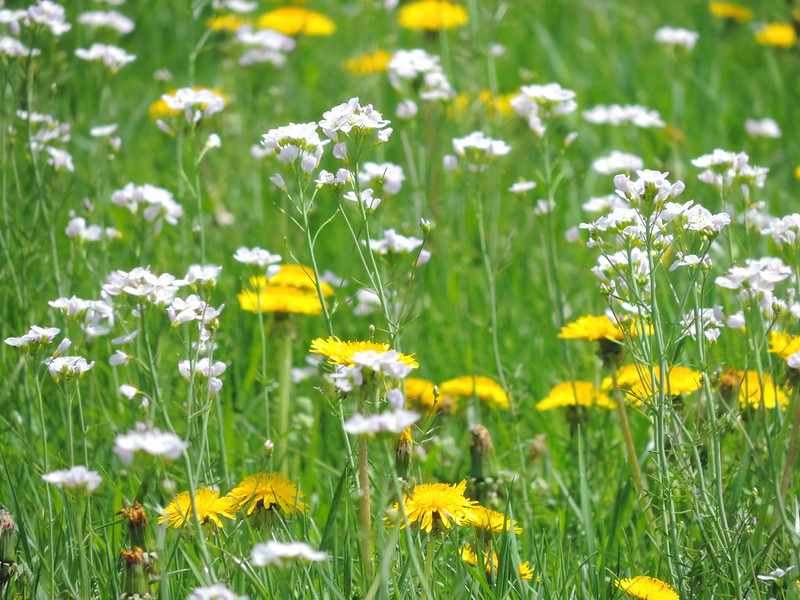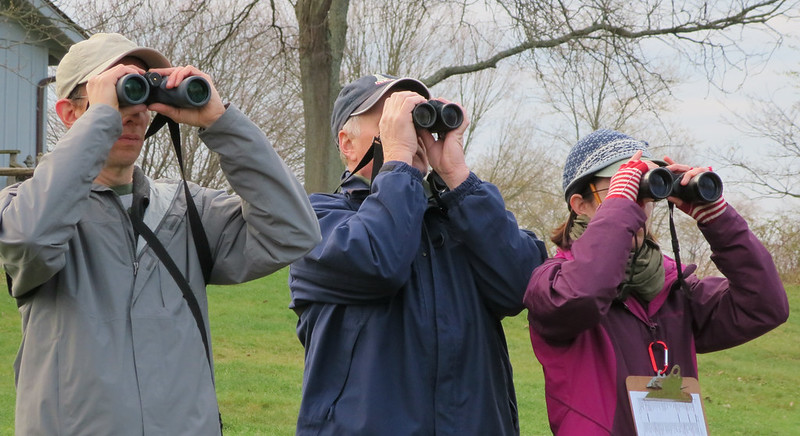Springtime is like a reunion with longtime friends. Friends that have you haven’t seen in awhile. But when you meet up again it brings joy to see their faces, hear their voices. It doesn’t matter how much time has passed. You can pick up where you left off.
These spring friends are the flowers, birds, reptiles, amphibians, and insects awaking or returning. As spring unfurls, new friends arrive every day. At first the Red-Winged Blackbirds return with their nasal call. The fuzzy willow flowers bloom. Spring Peepers call. Today, I looked out my window to see my first-of-the-year Rose-breasted Grosbeak at Audubon’s feeders. Ostrich Ferns once again uncurl their spirals in the garden. Sometimes I know them right away. Other times, their name is stuck on the tip of my tongue and it takes me awhile to recognize them.
But the return of these creatures also brings memories of the people who taught me more about them. Along with names, behavior patterns, and preferred habitats, I also recall an experience. Some of the experiences, I’ve had on solo rambles through the woods. But many of them involve discovering and learning outside with other people.
When I harvest snap peas and plant pansies in my garden, I always think of my mom. When I was young, she let me pick out what to plant in the garden — and who can resist the sweetness of peas and the rainbow of petite pansy faces? My mom nurtured my curiosity and desire to dig in the dirt and grow beautiful things.
I recall Cathy, my first boss in the outdoor education field when I see Red Maple trees. As a forester, she taught me a great deal about trees but her comment about there always being something red on a Red Maple — red buds, red flowers, red petioles, red fall leaves — sticks in my mind. And I think of Jeff, who pointed out once that this early blooming tree is an important pollen and nectar source for honeybees and other pollinators in spring.

I think of Jen when Cuckoo flowers pop up among the grassy lawns and fields, their skinny stems swaying in the lightest of breezes. I remember looking at these delicate, white flowers with a magnifying glass. Jen taught me to look for the six stamens, four that are tall, two that are short in the center of four petals and sepals — a shared trait of plants in the mustard family. Then, much to my surprise, she popped the flower in her mouth to show it was also edible.
I think of Scott when I see a Common Yellowthroat, a warbler whose behavior is described as “skulking” in dense bushes and shrubs. He introduced me to its “Whichity, whichity” song. And, like him, I now refer to it as the “masked bandito” for its black markings across the face of the male bird and its difficulty in seeing it.
A song or sighting of a Hooded Warbler brings to mind Steve. He led a bird walk in which we stood watching for at least 25 minutes listening to the bird’s song until we saw it appear out of the bushes. It is from that walk I also learned the patience and determination of birders. When I heard the “Whit-a, whit-a, whit-e-o” on my own walk, I know to be comfortable if I wanted to spot it.

I think of Sarah when I recall funny identification tricks like the one she shared to determine the difference between a female Purple Finch and a female House Finch. Both brown and white striped birds of a similar shape and size, the female Purple Finch has a white line above her eye. She “does her eyeliner makeup” whereas the House Finch doesn’t because she’s staying home.
There are so many other memories tied to experience with people in nature. These are just a few that come immediately to mind. So often, plant and animal names and behaviors are intertwined with the memories of the people who guided me. These shared experiences solidify the new learning. Science has found that important, rewarding experiences produce stronger memories. For me, being with people who care to take the time to teach is important and rewarding. And when I replay that experience every spring upon the return of spring migrants and blooms, that memory grows stronger.
One of my favorite quotes about nature education in from Rachel Carson. She writes in her book, The Sense of Wonder “If a child is to keep alive his inborn sense of wonder, he needs the companionship of at least one adult who can share it, rediscovering with him the joy, excitement, and mystery of the world we live in.”
I find this to be true for adults too. Though our circles may be bigger and we may be reluctant to admit it. We also continue to learn and can keep our sense of wonder alive. Because sometimes we need help too. Sometimes it is a reminder it is okay to step away from the “important work” and step outside. Sometimes it is teaching the name, role, and behavior of a specific plant or animal. And other times it is just being there to share the experience and appreciation of the amazing creatures we share the world with.
I am grateful to those who shared and continue to share their knowledge, appreciation and wonder of the nature world. And I hope that I am part of the memories of the natural world for others in the same way.
Audubon Community Nature Center builds and nurtures connections between people and nature. ACNC is located just east of Route 62 between Warren and Jamestown. The trails are still open from dawn to dusk but Liberty, the Bald Eagle is currently off display during the construction of the Pamela A. Westrom Wildlife Habitat. You can visit her on her Facebook page. The Nature Center is partially open, including restrooms, the Blue Heron Gift Shop, and some exhibits. More information can be found online at auduboncnc.org or by calling (716) 569-2345.


Recent Comments